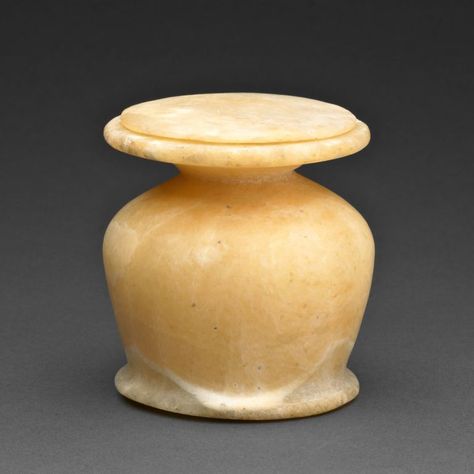From the Early Dynastic Period on, the Egyptians quarried a type of stone that is frequently referred to as alabaster but is, in fact, travertine (a type of limestone - calcium carbonate). It is a whitish, slightly translucent stone (often with veins of another colour) which occurs mainly in Middle Egypt, particularly between Miniya and Assiut. The best known and most important source was the Hatnub quarries, near El-`Amarna. One Old Kingdom quarry is situated in the Wadi Gerrawi close to Helwan. Because of its colour and durability, alabaster was regarded as a pure stone and used for chapels, pavements in temples, sarcophagi, altars and above all statues. True alabaster was quarried in the Faiyum region, but Egyptologists usually call this material gypsum (calcium sulphate).
In Egypt, alabaster is found in two places, a few miles behind the Valley of the Kings in Luxor (ancient Thebes) and the Malawi area. Some Alabaster factories in Luxor and Aswan prefer to get their Alabaster material from Malawi because they can use trucks for transportation, but the road to the area behind the Valley of the Kings is not good enough for trucks to transport the stone, so they still use horses or donkey-drawn carts. However, each vein of alabaster has its own unique colour and characteristic. It is found in nature in bulky, irregular shapes, in different sizes and at variable depths, mixed with other materials like marls or clay which protect the alabaster from other exterior agents.





























No comments:
Post a Comment
excellent go-ahead